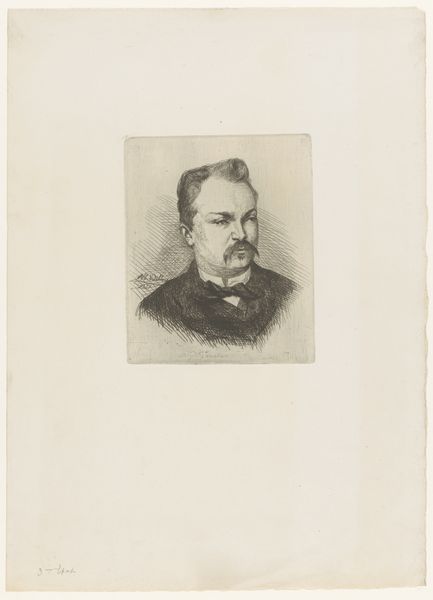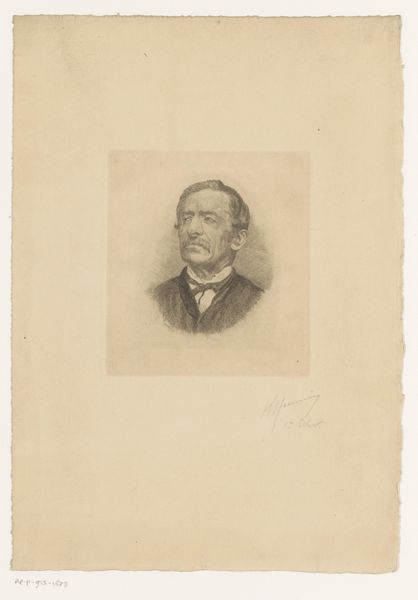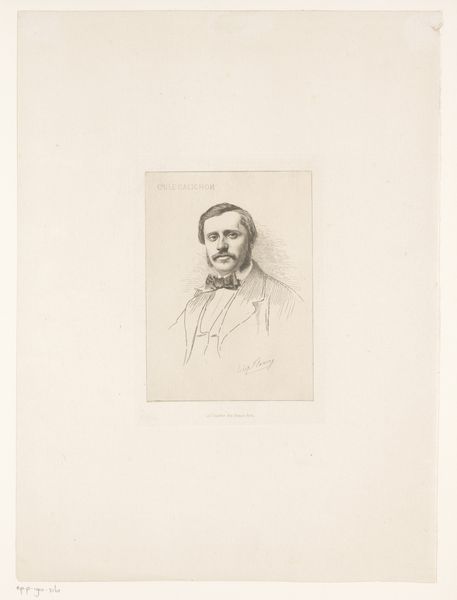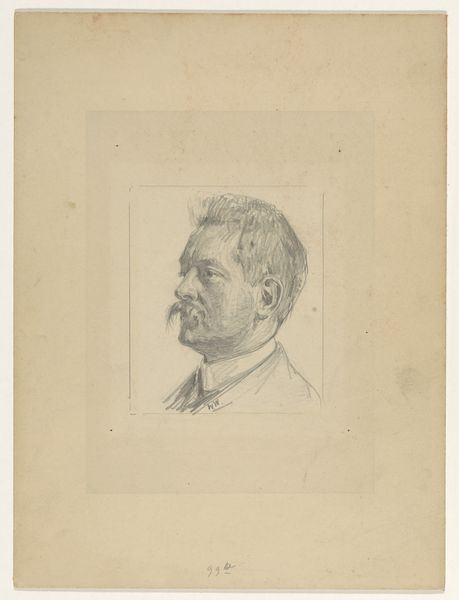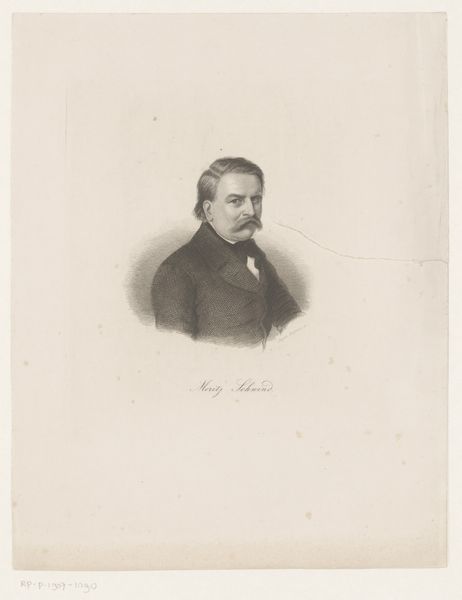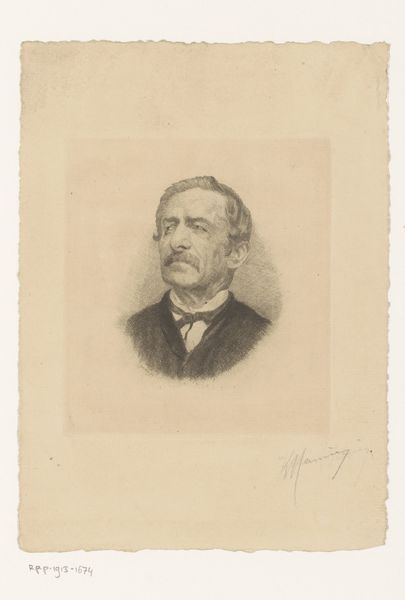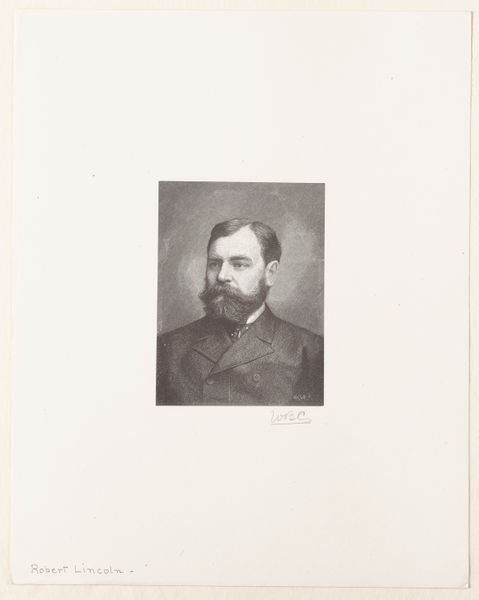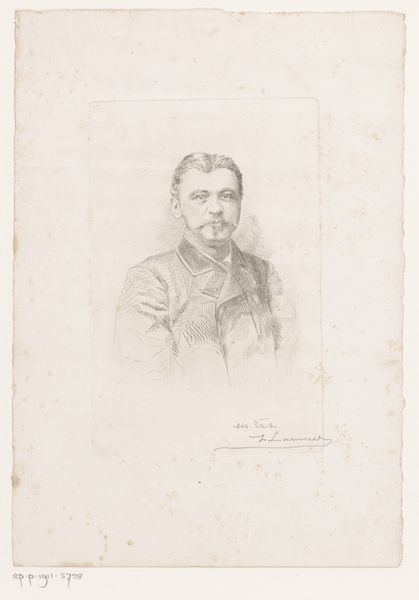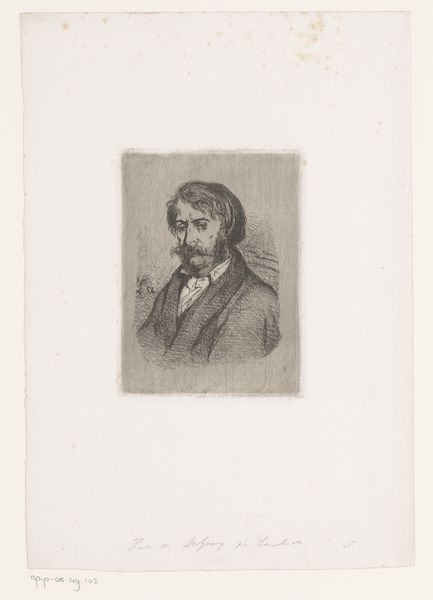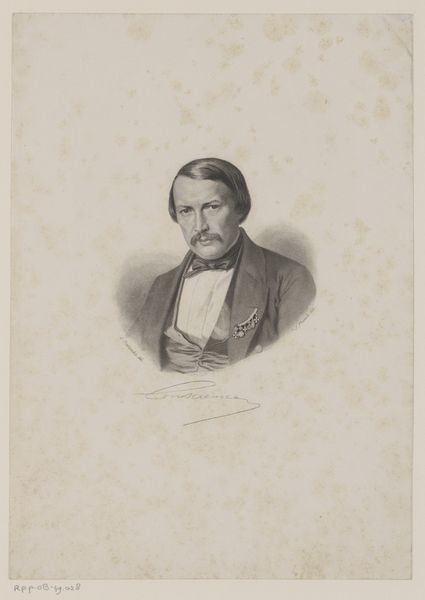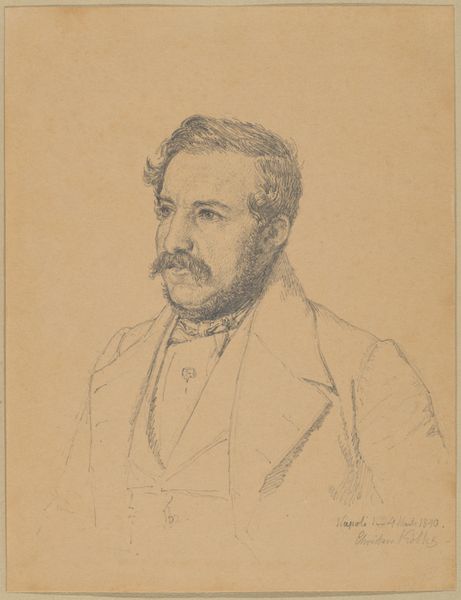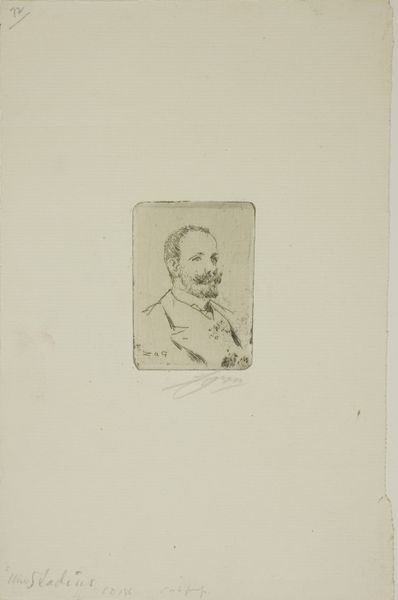
print, etching
#
portrait
# print
#
etching
#
old engraving style
#
figuration
#
academic-art
#
realism
Dimensions: height 176 mm, width 145 mm
Copyright: Rijks Museum: Open Domain
Curator: We’re looking now at a work entitled "Portret van een onbekende man," or "Portrait of an Unknown Man" by Albert Dillens, created in 1877. It's currently held in the Rijksmuseum collection. Editor: My first impression? A feeling of intimate melancholy. The etching has a softness, almost a whisper to it. And it's all meticulously constructed from a web of lines. What statement was Dillens trying to make, I wonder? Curator: Etchings at this time often echoed the graphic look of social realism while adhering to the conventions of academic art. Here, that might reflect the social and cultural status Dillens aims to convey of this sitter, especially via the mustache. He’s unknown now, but would he have been recognizable then? What signifiers of class and character is Dillens embedding within this visual record? Editor: I'm drawn to the physical labor embedded in this technique. Each line, each shadow is acid biting into metal, meticulously planned and executed. It makes me consider the accessibility of printmaking then, who was buying portraits made this way? Was it a more democratic mode than painted portraiture? How were these prints circulated? Curator: Considering your question and looking closer, the lines have an elegance to them—there's a kind of controlled freedom, if you will. What's revealed of a person's inner character when the superficial trappings are removed? This feels a bit more probing than pure representation; there is an implicit visual language for certain archetypes in this era. What message about status, for example, does that bowtie convey at the time? Editor: I'm fascinated by the almost ghost-like quality of the etching. Its monochrome palette lends it a timelessness, even as the subject remains firmly rooted in a specific period. I'm reminded that materiality holds stories. Even the aging paper whispers a tale. Curator: For me, it underlines the persistent allure and the mysteries that a portrait can convey through its graphic symbols. Editor: It all speaks to how a technique intertwines process, accessibility, consumption, and time to deliver a very complex idea.
Comments
No comments
Be the first to comment and join the conversation on the ultimate creative platform.

